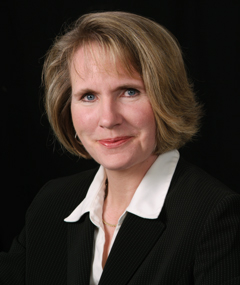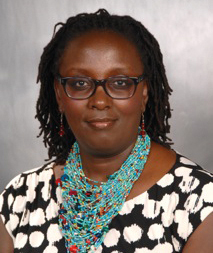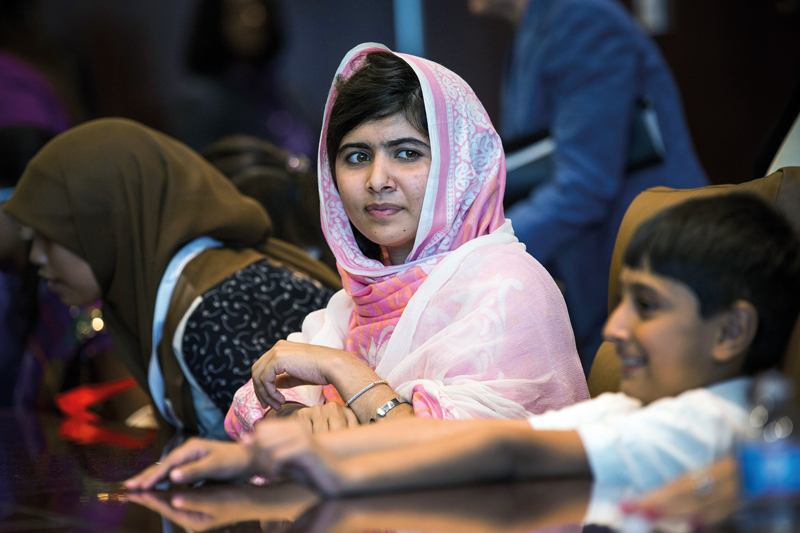By Susan R. Madsen and Faith Wambura Ngunjiri
In this article, Susan R. Madsen and Faith Wambura Ngunjiri discuss the challenges facing women in global leadership roles. Drawing on research found in their newly released book titled Women as Global Leaders, Madsen and Ngunjiri highlight the unique qualities that women bring to global leadership roles and provide advice and strategies for maximising those qualities successfully.
Towards the end of 2014, the world watched in wonder as Malala Yousafzai was crowned the Nobel Peace Prize winner – the youngest person, male or female, to ever win the award. Malala was catapulted to the global stage when she was shot and almost killed by the Taliban due to her advocacy for education rights for girls in Pakistan. Malala stands as one of the youngest exemplars of women as global leaders, as her activist leadership transcends the borders of race, class, gender and nation. She is one of the global women leaders profiled in our recent book Women as Global Leaders,1 along with Professor Wangari Maathai, Aung San Sun Kyi, Margaret Thatcher, Golda Meir, and others. We believe – and our contributing authors agree – that these trailblazers provide extraordinary examples worth exploring and learning from.
Another trailblazing global woman leader, Facebook COO Sheryl Sandberg, has continued to make headlines in the past few years by popularising the topic of women and leadership with her provocative book, Lean In: Women, Work and the Will to Lead. Citing both personal experience and social science research, Sandberg argues that there are still external barriers for women in attaining positions of authority and influence. However, women must rise to the challenge and address what some term “internal barriers”. Sandberg contends that men still run the world even though many women have the skills to lead. Yet, whether attributed to women limiting their own options, societal norms that discourage women from rising to the top, or lack of supportive organisational structures, challenges continue to keep women from positions of authority in nations and organisations.
In our book, Professor Nancy Adler from McGill University in Canada argues that we have yet to fully grasp what women can bring to society as global leaders. In her chapter ‘Women Leaders: Shaping History in the 21st Century’, Adler provides exhaustive lists to demonstrate the trends in leadership whereby women serve as heads of countries or CEOs of companies around the world. Her study demonstrates that, indeed, there has been some progress made. In fact, of the 126 women who have served as president or prime minister of a country, 30 have come to power in the past four years of this decade. As of this writing, women currently hold 4.6% of CEO positions at Standard and Poor 500 companies, a total of 23 women, while four women are running FTSE 100 companies. Although there is evidence of progress, the numbers highlight that very few women are serving in global leadership roles.
What is Global Leadership?
The research reported in our book indicates that, to be a global leader, a woman must influence followers’ attitudes and behaviours in a global context in order to achieve a common vision and goal, utilising competencies such as a global perspective or mindset, intercultural competency, behavioural adaptability, cultural intelligence, emotional intelligence and social intelligence. To comprehend womens’ roles as global leaders, it is important to understand the approaches that women use to lead effectively as global leaders, such as utilising multiple intelligences and authentic leadership. Furthermore, we need to understand programmes and initiatives that focus on developing women into global leaders and learn from those leaders who already exist. We need clear articulations of current demographic realities, struggles, challenges and opportunities that are now before us, as well as fresh new thinking about how progress can and must be made.
[ms-protect-content id=”9932″]
Why do we Need Women Serving in Global Leadership Positions?
 Many top leadership teams of global organisations still do not realise the value of having women in key positions. This is the case across all sectors, including business, government, civil society, and religious organisations. What the latest research makes clear, however, is that organisations will increasingly thrive when both men and women hold management and leadership roles. Understanding the value of inclusivity in these groups and organisations is critical and timely particularly for global entities in this fast changing world. Managers, leaders and other key stakeholders in global organisations need to better understand the benefits of attracting, retaining, promoting and empowering women.
Many top leadership teams of global organisations still do not realise the value of having women in key positions. This is the case across all sectors, including business, government, civil society, and religious organisations. What the latest research makes clear, however, is that organisations will increasingly thrive when both men and women hold management and leadership roles. Understanding the value of inclusivity in these groups and organisations is critical and timely particularly for global entities in this fast changing world. Managers, leaders and other key stakeholders in global organisations need to better understand the benefits of attracting, retaining, promoting and empowering women.
As the World Economic Forum demonstrates in the most recent Global Gender Gap Report,2 “The most important determinant of a country’s competitiveness is its human talent – the skills and productivity of its workforce. Similarly, an organisation’s performance is determined by the human capital that it possesses and its ability to use this resource efficiently. Ensuring the healthy development and appropriate use of half of the world’s available talent pool thus has a vast bearing on how competitive a country may become or how efficient a company may be. There is clearly also a values-based case for gender equality: women are one half of the world’s population and deserve equal access to health, education, economic participation and earning potential and political decision-making power. Ultimately, gender equality is fundamental to whether and how societies thrive”. We need the talents, skills and competencies of both men and women to achieve optimal growth and productivity in nations and organisations.
Furthermore, a host of studies have found that companies that have more women on boards and in leadership positions improve financial performance, strengthen the organisational climate, increase corporate social responsibility and reputation, leverage talent and enhance innovation and collective intelligence.3 For example, in terms of improving financial performance, studies have found that when more women are in formal leadership roles within global companies, the company benefits financially through increased profitability, higher operating results, better economic growth, faster debt reduction, lower risk of insolvency, better business deal making, better stock growth, higher market-to-book value, better corporate governance and oversight and improved organisational sustainability. In terms of leveraging talent, studies have found that women are more likely than men to think more holistically, seek win-win solutions, ask different questions and bring different experiences. Women are also more likely to be more sensitive to nonverbal cues, more comfortable with ambiguity in many situations, use different leadership styles, focus on inclusiveness, teams, and cooperation, be more nurturing and focus on developing others, make more ethical decisions and have more integrity.
The World Economic Forum’s Global Gender Gap Report further highlights the benefits of gender parity. It says, “With a growing female talent pool coming out of schools and universities, and with more consumer power in the hands of women, companies who fail to recruit and retain women – and ensure they have a pathway to leadership positions – undermine their long-term competitiveness. And for those that do, the benefits of diversity are evident. But these benefits go beyond the economic case. There is another simple and powerful reason why more women should be empowered: fairness. Women represent one half of the global population – they deserve equal access to health, education, influence, earning power and political representation. Their views and values are critical for ensuring a more prosperous and inclusive common future. Humanity’s collective progress depends on it.”4
The research reported in our newly released book suggests that the ability to be adroit through the use of multiple intelligences actually places women in good stead when it comes to being effective in the global role. Since global leadership necessitates the ability to cross all kinds of borders – language, cultural, political, and economic – women often have an advantage. This includes emotional intelligence, which enables leaders to be self-aware and socially aware, and to manage their own and others’ emotions: all are important competencies for global leadership. In addition, since emotional cues may differ from one context to another, cultural intelligence enables leaders to translate their competencies and contextualise them to the various spheres of influence.
Strategies for Getting to the Top
Both research and stories in popular business press highlight the challenges that women face in managing their roles in the home – wife, mother, daughter, caregiver – and their roles as leaders in organisations and the public sphere. Women need partners who can help them manage the demands of being a woman (e.g., mother, wife, daughter) and leader. Ursula Burns, CEO of Xerox, and Sheryl Sandberg indicate that having supportive partners fuels their success on the global arena. Our research highlights the need for women to find appropriate support networks to enable them to effectively manage their roles. Indeed, women’s higher capacity for emotional intelligence should serve them well in creating and sustaining appropriate support networks.
Furthermore, women need to engage in personal leadership development by taking advantage of developmental activities offered through their jobs. The research reported in our book indicates that women benefit tremendously in both women-only and mixed-gender leadership development programs. Contributing authors highlighted the efficacy of single-gender programs, which enable women to learn in a supportive environment, with others who may be experiencing similar challenges, thus creating a supportive network of peer mentors and colleagues.
In addition to formal leadership development programmes, women need to find both mentors and sponsors to help them achieve success as leaders. Mentors and sponsors provide much needed psychological and social support, give feedback and introduce mentees to important networks, as well as opening doors of opportunity. Research suggests that women benefit from being mentored by both men and women, with men often serving as important sponsors to recommend their protégés for positions. The research literature indicates that lack of mentors is one of the barriers getting in the way of women’s ascent to positions of leadership and authority. So women must not shy away from approaching potential mentors and sponsors.
The stories of powerful women global leaders like Malala Yousfazai and the late Professor Wangari Maathai demand that women, wherever they are, engage in leadership, in the midst of, rather than in the absence of, challenges and barriers. The women profiled in our book demonstrate leadership that begins at the grassroots, and continues across borders, cultures and contexts. Leadership that involves courage in the face of fear. Leadership that utilises boundary spanning and resourceful problem solving. For many women profiled in our current book and previous works, their leadership began right where they were, in villages and communities, in universities, businesses and non-profit organisations, often with minimal resources, but always with the courage to believe that things could get better due to their activism and agency. So you must start now, wherever you are, whatever you have – the future depends on you.
The world is changing faster than ever before, and there are new opportunities for women to emerge as leaders in all types of organisations and efforts that expand beyond the walls of specific countries – but there is still much work to be done in terms of developing theory, conducting research, developing women’s leadership programmes, and expanding positive media message to help women and those who influence them. As our world continues to face wicked problems – from effects of global warming to internal and cross-border conflicts, from ISIL to Boko Haram – we need the authentic, collaborative, transformational, community-building, border-crossing skills and competencies that women bring to the decision-making table. We need more men and women to build, bridge, and blaze pathways for women’s leadership globally.
About the Authors
 Susan R. Madsen is the Orin R. Woodbury Professor of Leadership and Ethics at Utah Valley University in Utah, USA. She has published nearly 100 articles, chapters, and reports and four books of her work. She presents often and is the founder of numerous successful local, national and international women and leadership networks.
Susan R. Madsen is the Orin R. Woodbury Professor of Leadership and Ethics at Utah Valley University in Utah, USA. She has published nearly 100 articles, chapters, and reports and four books of her work. She presents often and is the founder of numerous successful local, national and international women and leadership networks.
 Faith Wambura Ngunjiri is Director at the Lorentzsen Center for Faith and Work at Concordia College, in Minnesota, USA. She has published books, book chapters, and articles focusing on women and leadership, and presents at various local, national, and international conferences. She is author of Women’s Spiritual Leadership in Africa (SUNY, 2010).
Faith Wambura Ngunjiri is Director at the Lorentzsen Center for Faith and Work at Concordia College, in Minnesota, USA. She has published books, book chapters, and articles focusing on women and leadership, and presents at various local, national, and international conferences. She is author of Women’s Spiritual Leadership in Africa (SUNY, 2010).
References
1. Ngunjiri, F. W., & Madsen, S. R. (Eds.) (2015). Women as Global Leaders (Charlotte, NC: Information Age Publishing).
2. World Economic Forum (2014) The Global Gender Gap Report. http://www3.weforum.org/docs/GGGR14/GGGR_CompleteReport_2014.pdf, p. 39.
3. Catalyst Information Center (2013). Why Diversity Matters, http://www.catalyst.org/knowledge/why-diversity-matters; Madsen, S. R. (2015). Why do we Need More Women Leaders in Utah, http://www.uvu.edu/uwlp/docs/uwlpbrief2015no5.pdf.
4. World Economic Forum (2014) The Global Gender Gap Report. http://www3.weforum.org/docs/GGGR14/GGGR_CompleteReport_2014.pdf, p. v.
[/ms-protect-content]




























